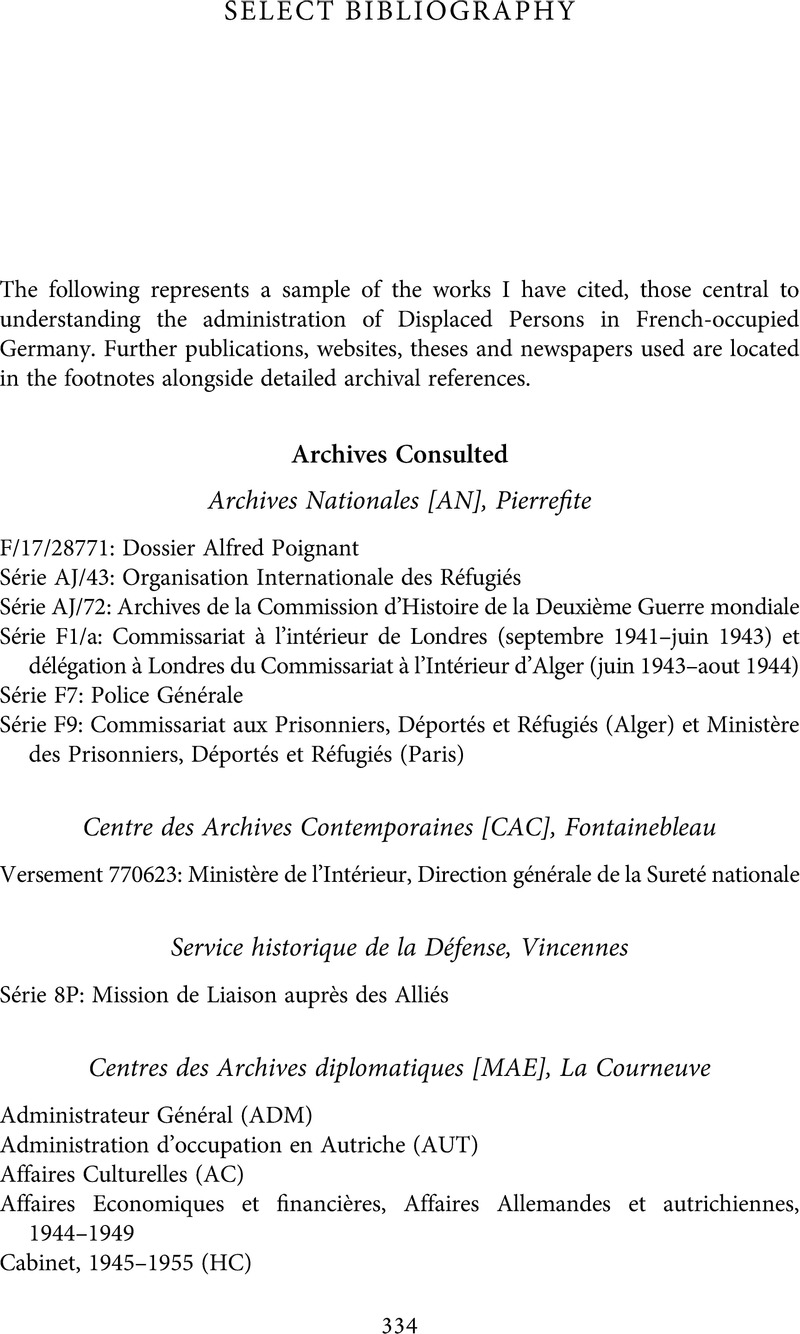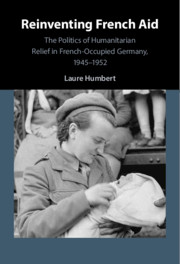Select Bibliography
Published online by Cambridge University Press: 20 May 2021
Summary

- Type
- Chapter
- Information
- Reinventing French AidThe Politics of Humanitarian Relief in French-Occupied Germany, 1945–1952, pp. 334 - 352Publisher: Cambridge University PressPrint publication year: 2021

